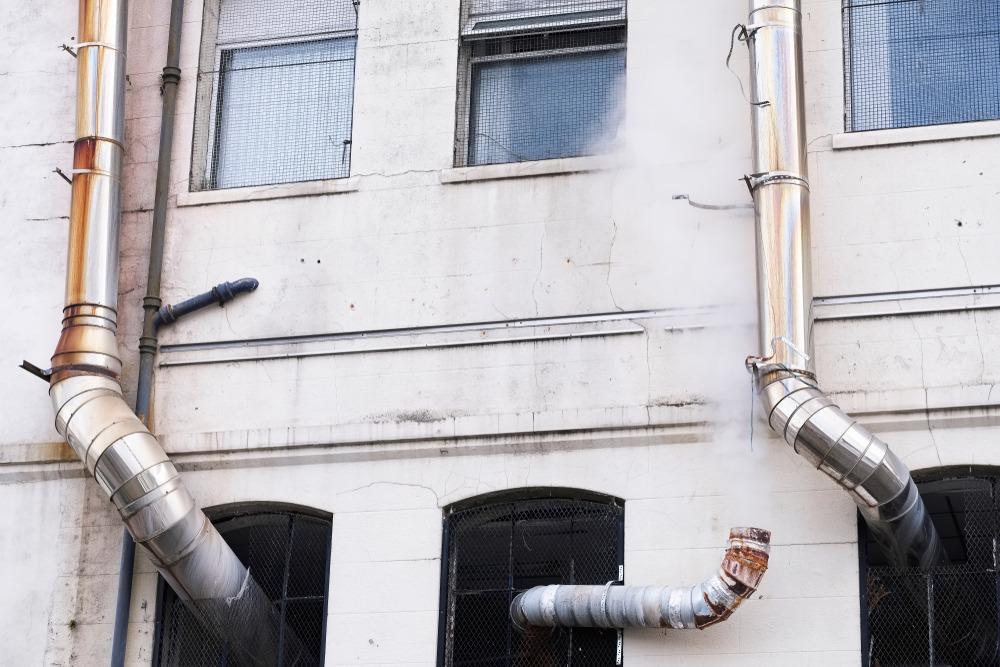New research recently published in the Journal of Environmental Chemical Engineering has highlighted a potential alternative for conventional solvents used for carbon capture from flue gas.

Study: CO2 Capture from Flue Gas using Phosphonium based Deep Eutectic Solvents: Modelling and Simulation Approach, Image Credit: richardjohnson/Shutterstock.com
Rising global CO2 emissions and the excessive release of other greenhouse gases continue to have a considerable impact on the climate, prompting an urgent need for action across all sectors and industries.
The production and refinement of various gases is no exception, with a number of sectors implementing new technologies and processes to capture CO2 from various sources such as exhaust gases, refinery gases, and natural gas.
It is widely recognized that the use of carbon capture and storage technology represents one of the most efficient and cost-effective means of minimizing carbon emissions, with techniques such as oxy-fuel combustion, post-combustion, and pre-combustion employed depending on the stage of CO2 capture.
Flue gas originates from a number of combustion processes and represents a significant source of CO2 emissions across a range of industries. The removal of CO2 from key emissions sources such as the flue gas produced in power plants is therefore considered a vital step towards a carbon-neutral future.
One of the most common approaches to decarbonizing flue gas lies in the use of specifically designed solvents –aqueous amine solutions, polyethylene glycol ether, or, more recently, ionic liquids (ILs) - as part of a post-combustion CO2 separation process.
Although they fulfill a vital role, these processes and solvents are not without their disadvantages.
The use of conventional solvents may lead to equipment corrosion, degradation, and the release of volatile organic compounds (VOCs) which further contribute to air pollution. While ionic liquids offer some advantages, these are expensive, difficult to synthesize, and are not biodegradable.
New research recently published in the Journal of Environmental Chemical Engineering has highlighted a potential alternative for these solvents. The study aimed to highlight and improve upon a new class of deep eutectic solvents (DESs) which offer a number of advantages over the more commonly used solvents.
DESs’ properties can be customized to accommodate specific applications. They boast the positive properties of ILs including a non-corrosive nature and low vapor pressure while offering the advantage of reduced cost.
More recently, DESs have attracted increased attention due to their potential for CO2 solubility. It has been determined that customizing a number of chemical properties of DESs offers the potential to further optimize their CO2 solubility.
With this in mind, the researchers investigated CO2 solubility in three different phosphonium-based DESs. These DESs employed ethylene glycol, diethylene glycol, and glycerol as hydrogen bond donors (HBDs)
A number of experiments were performed at a range of temperatures and pressures to evaluate the impact of the specific HBDs on the solvents’ potential to absorb CO2 via physisorption.
CO2 solubility was measured using the pressure drop method, which measures a negative difference in pressure to evaluate levels of CO2 present prior to and following the introduction of the solvent.
A series of advanced modeling techniques were employed to simulate the impact of the DESs under investigation when used with typical flue gas mixes and to compare the characteristics of the synthesized DESs with data from existing literature.
More on Flue Gas: Determination of Flue Gas Desulfurization by Analyzing Limestone
The researchers also evaluated the impact of varying pressure levels and temperatures on the synthesized DESs capacity to absorb CO2, in order to further optimize this process.
The study found that the use of diethylene glycol as a hydrogen bond donor resulted in the highest CO2 uptake of the three HBDs evaluated, while ethylene glycol offered the lowest CO2 uptake.
The study also highlighted that these synthesized DESs offered a higher rate of CO2 solubility than more conventional DESs which employ ammonium-based hydrogen bond acceptors.
It has been estimated that in order to meet the urgent need to become carbon neutral by 2050 and avoid some of the most dangerous effects of climate change, it will be necessary to deploy over 150 times the carbon-capture capacity that is currently in place.
Key to this huge scale-up in carbon-capture infrastructure is a significant reduction in costs and the development of an increasing number of carbon-capture options suitable for a diverse array of CO2 emission sources.
The potential to replace the conventional solvents used in flue gas decarbonization could be a significant step towards this goal, helping to make this process more sustainable, more cost-effective, and easier to implement across a wider range of industries.
References and Further Reading
Mohd. Belal Haider, Pranjal Maheshwari, Rakesh Kumar, CO2 Capture from Flue Gas using Phosphonium based Deep Eutectic Solvents: Modelling and Simulation Approach, Journal of Environmental Chemical Engineering, 2021, 106727, ISSN 2213-3437, https://www.sciencedirect.com/science/article/pii/S2213343721017048?via%3Dihub
Bettenhausen, C. 2021, Chemical & Engineering News, The life-or-death race to improve carbon capture, https://cen.acs.org/environment/greenhouse-gases/capture-flue-gas-co2-emissions/99/i26
Disclaimer: The views expressed here are those of the author expressed in their private capacity and do not necessarily represent the views of AZoM.com Limited T/A AZoNetwork the owner and operator of this website. This disclaimer forms part of the Terms and conditions of use of this website.